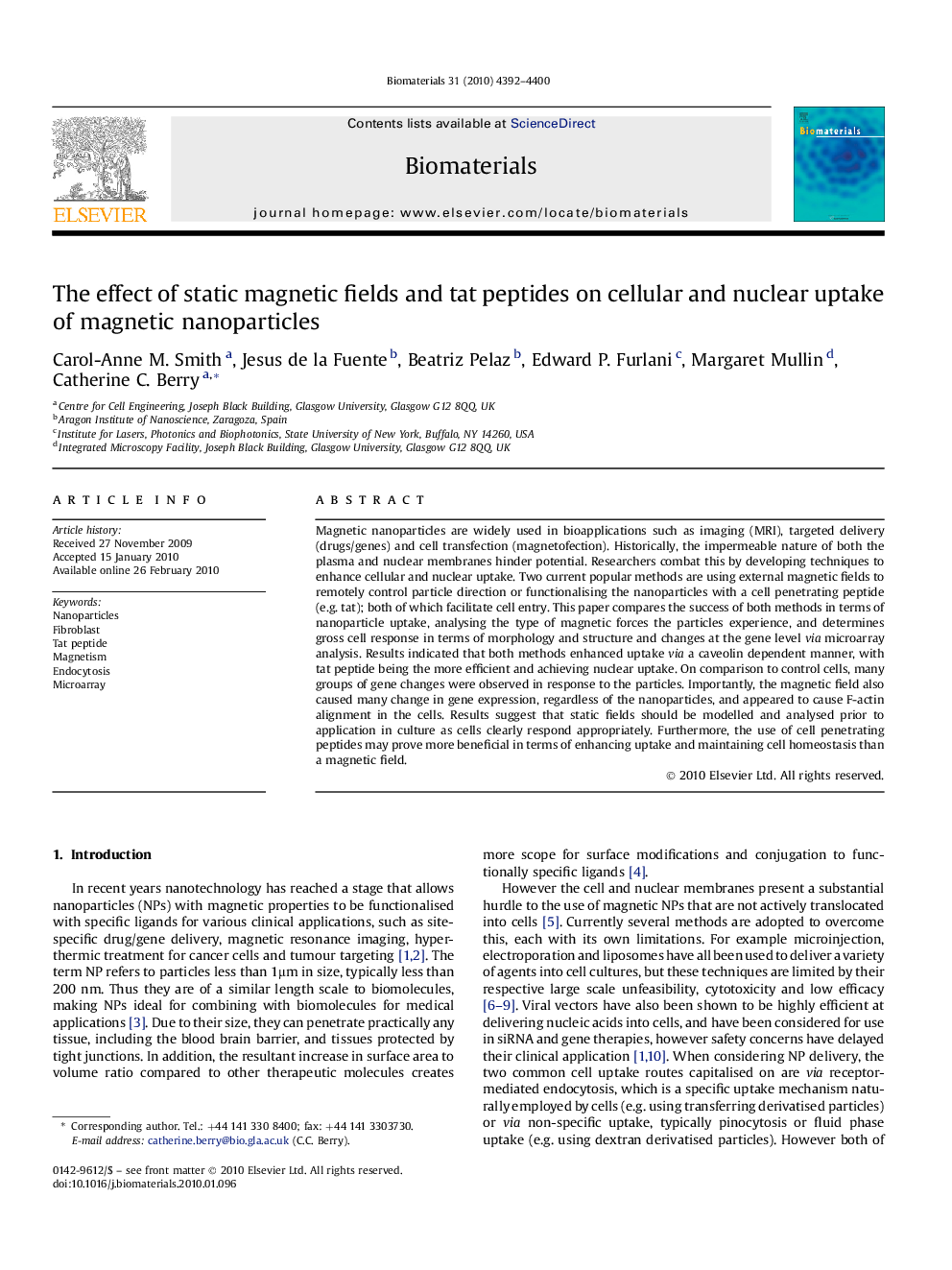| کد مقاله | کد نشریه | سال انتشار | مقاله انگلیسی | نسخه تمام متن |
|---|---|---|---|---|
| 8446 | 590 | 2010 | 9 صفحه PDF | دانلود رایگان |

Magnetic nanoparticles are widely used in bioapplications such as imaging (MRI), targeted delivery (drugs/genes) and cell transfection (magnetofection). Historically, the impermeable nature of both the plasma and nuclear membranes hinder potential. Researchers combat this by developing techniques to enhance cellular and nuclear uptake. Two current popular methods are using external magnetic fields to remotely control particle direction or functionalising the nanoparticles with a cell penetrating peptide (e.g. tat); both of which facilitate cell entry. This paper compares the success of both methods in terms of nanoparticle uptake, analysing the type of magnetic forces the particles experience, and determines gross cell response in terms of morphology and structure and changes at the gene level via microarray analysis. Results indicated that both methods enhanced uptake via a caveolin dependent manner, with tat peptide being the more efficient and achieving nuclear uptake. On comparison to control cells, many groups of gene changes were observed in response to the particles. Importantly, the magnetic field also caused many change in gene expression, regardless of the nanoparticles, and appeared to cause F-actin alignment in the cells. Results suggest that static fields should be modelled and analysed prior to application in culture as cells clearly respond appropriately. Furthermore, the use of cell penetrating peptides may prove more beneficial in terms of enhancing uptake and maintaining cell homeostasis than a magnetic field.
Journal: Biomaterials - Volume 31, Issue 15, May 2010, Pages 4392–4400